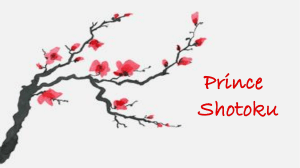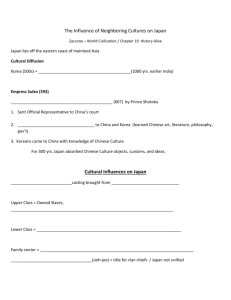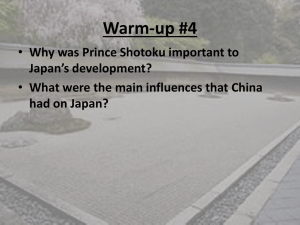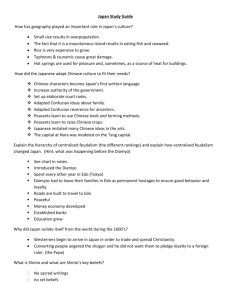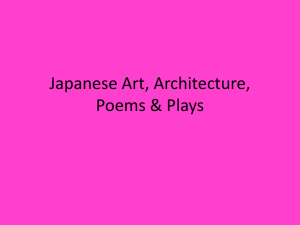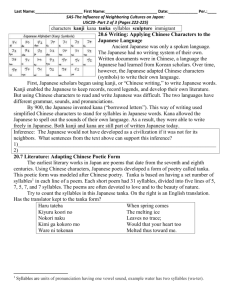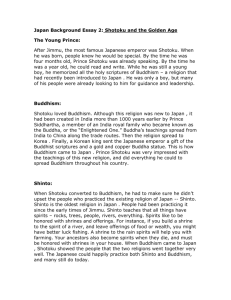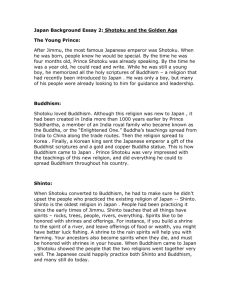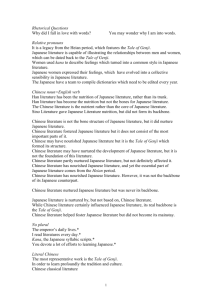Study Guide Answers for Chapter 20
advertisement
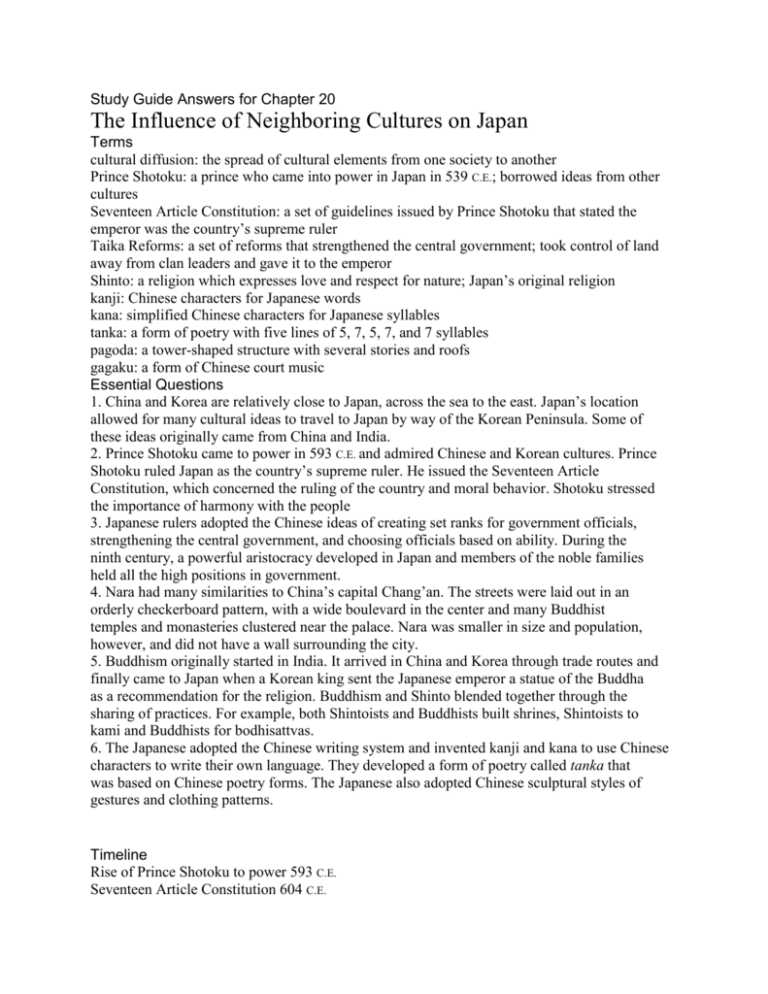
Study Guide Answers for Chapter 20 The Influence of Neighboring Cultures on Japan Terms cultural diffusion: the spread of cultural elements from one society to another Prince Shotoku: a prince who came into power in Japan in 539 C.E.; borrowed ideas from other cultures Seventeen Article Constitution: a set of guidelines issued by Prince Shotoku that stated the emperor was the country’s supreme ruler Taika Reforms: a set of reforms that strengthened the central government; took control of land away from clan leaders and gave it to the emperor Shinto: a religion which expresses love and respect for nature; Japan’s original religion kanji: Chinese characters for Japanese words kana: simplified Chinese characters for Japanese syllables tanka: a form of poetry with five lines of 5, 7, 5, 7, and 7 syllables pagoda: a tower-shaped structure with several stories and roofs gagaku: a form of Chinese court music Essential Questions 1. China and Korea are relatively close to Japan, across the sea to the east. Japan’s location allowed for many cultural ideas to travel to Japan by way of the Korean Peninsula. Some of these ideas originally came from China and India. 2. Prince Shotoku came to power in 593 C.E. and admired Chinese and Korean cultures. Prince Shotoku ruled Japan as the country’s supreme ruler. He issued the Seventeen Article Constitution, which concerned the ruling of the country and moral behavior. Shotoku stressed the importance of harmony with the people 3. Japanese rulers adopted the Chinese ideas of creating set ranks for government officials, strengthening the central government, and choosing officials based on ability. During the ninth century, a powerful aristocracy developed in Japan and members of the noble families held all the high positions in government. 4. Nara had many similarities to China’s capital Chang’an. The streets were laid out in an orderly checkerboard pattern, with a wide boulevard in the center and many Buddhist temples and monasteries clustered near the palace. Nara was smaller in size and population, however, and did not have a wall surrounding the city. 5. Buddhism originally started in India. It arrived in China and Korea through trade routes and finally came to Japan when a Korean king sent the Japanese emperor a statue of the Buddha as a recommendation for the religion. Buddhism and Shinto blended together through the sharing of practices. For example, both Shintoists and Buddhists built shrines, Shintoists to kami and Buddhists for bodhisattvas. 6. The Japanese adopted the Chinese writing system and invented kanji and kana to use Chinese characters to write their own language. They developed a form of poetry called tanka that was based on Chinese poetry forms. The Japanese also adopted Chinese sculptural styles of gestures and clothing patterns. Timeline Rise of Prince Shotoku to power 593 C.E. Seventeen Article Constitution 604 C.E. Invention of kana for written Japanese 900 C.E.
